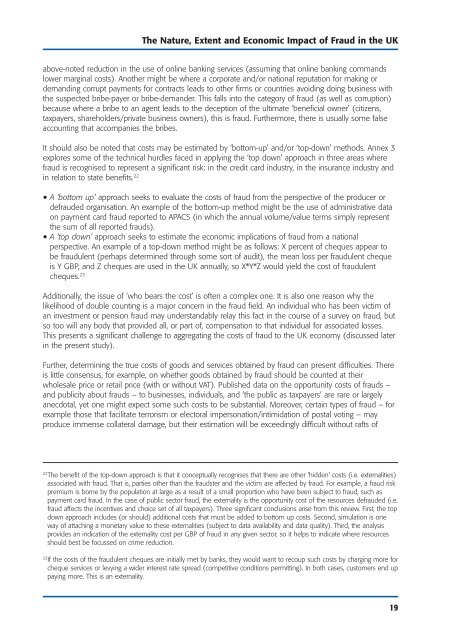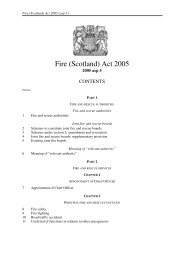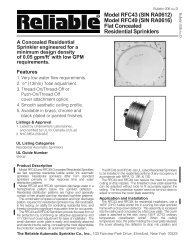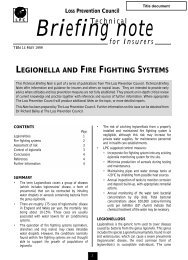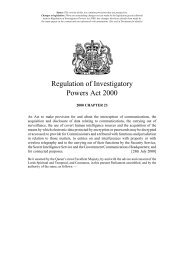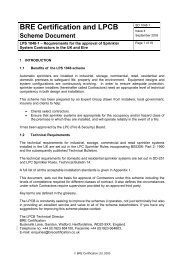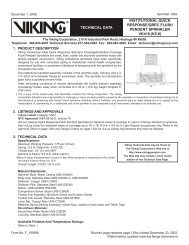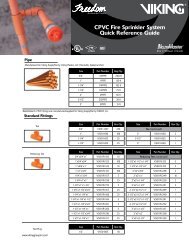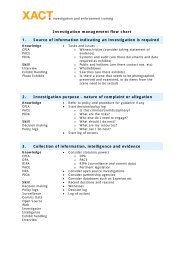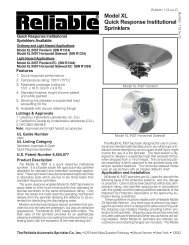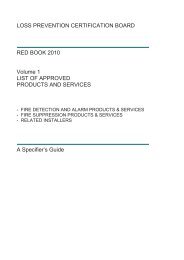The Nature, Extent and Economic Impact of ... - Cardiff University
The Nature, Extent and Economic Impact of ... - Cardiff University
The Nature, Extent and Economic Impact of ... - Cardiff University
You also want an ePaper? Increase the reach of your titles
YUMPU automatically turns print PDFs into web optimized ePapers that Google loves.
<strong>The</strong> <strong>Nature</strong>, <strong>Extent</strong> <strong>and</strong> <strong>Economic</strong> <strong>Impact</strong> <strong>of</strong> Fraud in the UK<br />
above-noted reduction in the use <strong>of</strong> online banking services (assuming that online banking comm<strong>and</strong>s<br />
lower marginal costs). Another might be where a corporate <strong>and</strong>/or national reputation for making or<br />
dem<strong>and</strong>ing corrupt payments for contracts leads to other firms or countries avoiding doing business with<br />
the suspected bribe-payer or bribe-dem<strong>and</strong>er. This falls into the category <strong>of</strong> fraud (as well as corruption)<br />
because where a bribe to an agent leads to the deception <strong>of</strong> the ultimate ‘beneficial owner’ (citizens,<br />
taxpayers, shareholders/private business owners), this is fraud. Furthermore, there is usually some false<br />
accounting that accompanies the bribes.<br />
It should also be noted that costs may be estimated by ‘bottom-up’ <strong>and</strong>/or ‘top-down’ methods. Annex 3<br />
explores some <strong>of</strong> the technical hurdles faced in applying the ‘top down’ approach in three areas where<br />
fraud is recognised to represent a significant risk: in the credit card industry, in the insurance industry <strong>and</strong><br />
in relation to state benefits. 22<br />
5 A ‘bottom up’ approach seeks to evaluate the costs <strong>of</strong> fraud from the perspective <strong>of</strong> the producer or<br />
defrauded organisation. An example <strong>of</strong> the bottom-up method might be the use <strong>of</strong> administrative data<br />
on payment card fraud reported to APACS (in which the annual volume/value terms simply represent<br />
the sum <strong>of</strong> all reported frauds).<br />
5 A ‘top down’ approach seeks to estimate the economic implications <strong>of</strong> fraud from a national<br />
perspective. An example <strong>of</strong> a top-down method might be as follows: X percent <strong>of</strong> cheques appear to<br />
be fraudulent (perhaps determined through some sort <strong>of</strong> audit), the mean loss per fraudulent cheque<br />
is Y GBP, <strong>and</strong> Z cheques are used in the UK annually, so X*Y*Z would yield the cost <strong>of</strong> fraudulent<br />
cheques. 23<br />
Additionally, the issue <strong>of</strong> ‘who bears the cost’ is <strong>of</strong>ten a complex one. It is also one reason why the<br />
likelihood <strong>of</strong> double counting is a major concern in the fraud field. An individual who has been victim <strong>of</strong><br />
an investment or pension fraud may underst<strong>and</strong>ably relay this fact in the course <strong>of</strong> a survey on fraud, but<br />
so too will any body that provided all, or part <strong>of</strong>, compensation to that individual for associated losses.<br />
This presents a significant challenge to aggregating the costs <strong>of</strong> fraud to the UK economy (discussed later<br />
in the present study).<br />
Further, determining the true costs <strong>of</strong> goods <strong>and</strong> services obtained by fraud can present difficulties. <strong>The</strong>re<br />
is little consensus, for example, on whether goods obtained by fraud should be counted at their<br />
wholesale price or retail price (with or without VAT). Published data on the opportunity costs <strong>of</strong> frauds –<br />
<strong>and</strong> publicity about frauds – to businesses, individuals, <strong>and</strong> ‘the public as taxpayers’ are rare or largely<br />
anecdotal, yet one might expect some such costs to be substantial. Moreover, certain types <strong>of</strong> fraud – for<br />
example those that facilitate terrorism or electoral impersonation/intimidation <strong>of</strong> postal voting – may<br />
produce immense collateral damage, but their estimation will be exceedingly difficult without rafts <strong>of</strong><br />
22<br />
<strong>The</strong> benefit <strong>of</strong> the top-down approach is that it conceptually recognises that there are other 'hidden' costs (i.e. externalities)<br />
associated with fraud. That is, parties other than the fraudster <strong>and</strong> the victim are affected by fraud. For example, a fraud risk<br />
premium is borne by the population at large as a result <strong>of</strong> a small proportion who have been subject to fraud, such as<br />
payment card fraud. In the case <strong>of</strong> public sector fraud, the externality is the opportunity cost <strong>of</strong> the resources defrauded (i.e.<br />
fraud affects the incentives <strong>and</strong> choice set <strong>of</strong> all taxpayers). Three significant conclusions arise from this review. First, the top<br />
down approach includes (or should) additional costs that must be added to bottom up costs. Second, simulation is one<br />
way <strong>of</strong> attaching a monetary value to these externalities (subject to data availability <strong>and</strong> data quality). Third, the analysis<br />
provides an indication <strong>of</strong> the externality cost per GBP <strong>of</strong> fraud in any given sector, so it helps to indicate where resources<br />
should best be focussed on crime reduction.<br />
23<br />
If the costs <strong>of</strong> the fraudulent cheques are initially met by banks, they would want to recoup such costs by charging more for<br />
cheque services or levying a wider interest rate spread (competitive conditions permitting). In both cases, customers end up<br />
paying more. This is an externality.<br />
19


